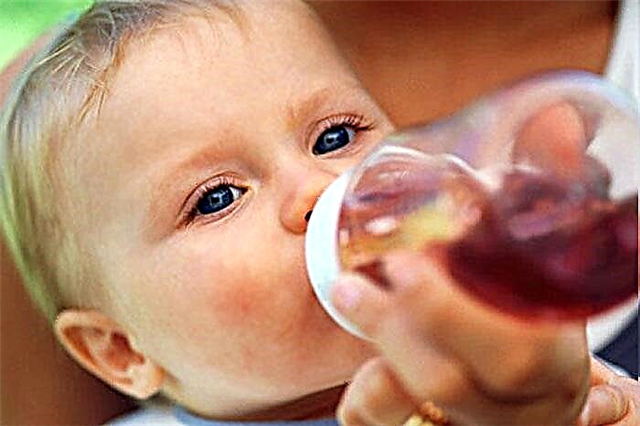To maintain the chosen diet, you need to know how to supplement the formula while breastfeeding a newborn. In some cases, there are problems associated with the amount of milk produced or changes in the mother's health status, which make GV temporarily unavailable. It is for such situations that the use of ready-made breast milk substitutes - formulas is provided.

GV does not always fully satisfy the needs of the crumbs in food
How and when to supplement
The use of breast milk together with the formula is a forced measure in 90% of cases. It is especially important to carry out such supplementary feeding in the first 4 months of life, when there is no complete complementary food. Artificial nutrition is introduced as an additional one only with the permission of the pediatrician. There are various reasons for this decision, if possible, it is recommended to keep latching to the breast for up to 1-1.5 years.
What is supplementary feeding and complementary feeding
In order to properly organize the nutrition of the baby, you need to understand the difference between these two terms. Supplementary feeding is the process of getting the baby extra food. It is required when breast milk is insufficient for adequate nutrition. Supplementary foods are:
- cow or goat milk;
- breast milk from another breastfeeding woman;
- dry mixes.
Supplementation is prescribed by a pediatrician if the child is not gaining weight according to his age, or there are problems associated with lactation.
Complementary feeding is the introduction of a new form of nutrition - the expansion of the number of foods that can be included in the diet. In this case, the food will not always be liquid; pieces of vegetables, fruits, meat and fish, fibers that will need to be chewed will gradually appear in it. It is recommended to diversify the diet after the baby reaches the age of 6 months.
Attention! There should be no sweetness in complementary foods.

It is best to skillfully combine supplementation and natural nutrition
Basic rules for feeding
Use the appropriate amount of the mixture based on the child's age and weight. In most cases, the baby is weighed, the “wet diaper” test, and then the mixture is prepared in accordance with the baby's age.
For supplementation, a syringe is preferable to a bottle if breastfeeding is to be maintained. Even the maternity hospital uses technology with a syringe. If utensils, bowls or spoons are used, they must be pre-disinfected. You can also spoon food.
For supplementation, against artificial feeding
In most cases, doctors answer in the affirmative when asked whether it is possible to feed a newborn with breast milk and formula at the same time. Mixed feeding can help with weight gain and health, but if not necessary, it is better to keep the hepatitis B. The reason is that even the best quality mixture does not contain enough vitamins and minerals.
Choosing the right nutritional option, you need to follow the regimen, make sure that the baby receives vitamins and minerals on time. It is recommended only to feed with a mixture, but not to transfer the baby to artificial nutrition completely.
Attention! The mixture in the daily diet should be no more than 50% of the total food.
In the first month
In the first month of life, supplementation may be required, since not all women have milk quickly and in the right amount. Correct feeding involves taking into account the individual characteristics of the child. That is why, in some cases, a mixed nutrition scheme is drawn up, the alternation of the mixture and milk with it takes place with the expectation of not exceeding the recommended amount of artificial food.
What mixture is best to start with
If the introduction of artificial components is required, then it is necessary to discuss with the pediatrician with which mixture it is better to start feeding the newborn. In most cases, preference is given to the option used in the hospital. The composition should not have any allergies or individual intolerance to individual components of the dry product. If a week has passed, the child continues to gain weight, he is in a good mood, there is no abdominal discomfort, the mixture can be continued to be used.
Council. Before choosing an option, you need to look at the packaging. It indicates the age from which you can start using (for example, 0-3 months, from 6 months, from 1 year).
What to feed from
It is best to start feeding or using supplements from a spoon (tea or dessert) or a small syringe (without a needle). So you can easily return the breast.
There are several options for introducing the mixture:
- syringe;
- a spoon;
- bottle.
Experts recommend using the first 2 methods if you plan to return to GW. The bottle should only be used as a last resort.

For complementary feeding and supplementary feeding, special devices are preferred.
Syringe pipette
If this device is used for supplementary feeding, then food intake is performed reclining (on the mother's lap) or in an upright position. Feature - it takes time to complete the process completely. Also, the infant must make an effort to get food (like sucking).
Pros and cons of fixtures
The syringe helps to ensure that all food enters the stomach. It is oblong in shape, so the child can perceive it as a breast. A spoon will require grip skills from the baby, and he should also open his mouth wide. Similar reflexes are also relevant for HS. Cons - there is no direct contact with the mother, the baby does not feel her warmth.
When to add supplements
If the doctor has explained whether it is possible to supplement the formula while continuing to breastfeed the newborn, it is necessary to determine the moment when this food component is started to be used.
Frequent occasions
In most cases, the child needs additional nutrition:
- if mom doesn't have enough milk;
- when weight gain is slower than expected;
- in the event that mom is sick.
Also, the mixture is used at a time when there is no way to constantly be near the baby.
How to determine milk shortage
With hepatitis B, in 90% of cases, milk should be sufficient for adequate nutrition. It is not difficult to determine its lack:
- the kid is naughty;
- poorly gaining weight;
- eats more than 10 times a day;
- wets diapers less than 10 times a day.
If such manifestations are present, you need to think about how to supplement the formula while breastfeeding a newborn.
Basic principles of mixed food
It is necessary to supplement the baby with a formula so that breast milk predominates in the diet. You need to add a liquid mixture according to age and taking into account weight indicators: up to 2 months - no more than 20% of the weight, at 2-4 months - 1/6 of the total volume, at 4-6 months - 1/8 of the total amount.
Doesn't take breast after bottle
In some cases, after using the bottle, the baby refuses to return to breastfeeding. The reasons are different sizes between the nipple and the nipple, the milk flow from the bottle is stronger, the contact with the mother is lost.
Attention! Small holes in the nipple are recommended to increase the likelihood of a return to HV. Then, when using a bottle, the size of milk flows will not be different with the breast, and the baby will have to make an effort to suckle to get food.
The question of which formula is better and safer to supplement a newborn should arise for all parents considering the possibility of mixed or complementary feeding. Recommendations are given by the doctor at the reception, so you need to visit him first.



